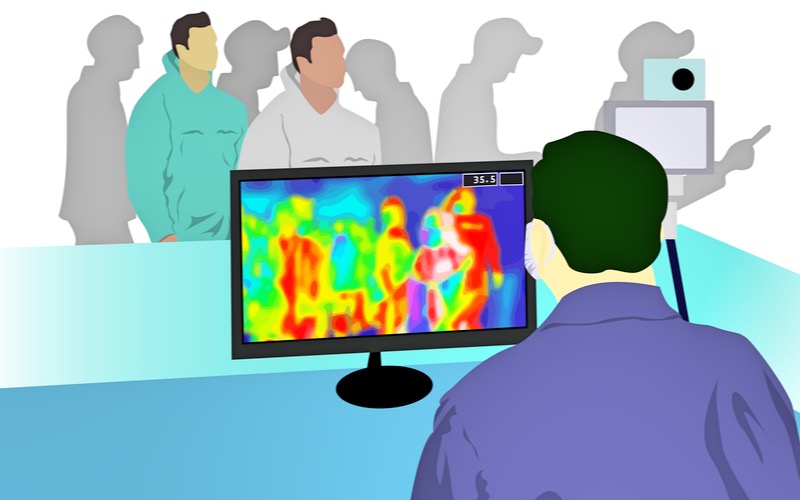In May 2020 air transport lies physically and financially fragmented, with major airlines grounded, flight schedules cut by up to 80% globally, and many countries closing their borders to reduce the spread of COVID-19. Despite this global turmoil, the industry is aligning around the need for trust, technology and collaboration to support the recovery to a ‘new normal’ for air travel. The emerging trends from the pandemic will forge a leaner, safer and smarter air transport industry that rebuilds trust and confidence in passengers, underpinning the next decade of travel. So what will be the new normal in Aviation?
Contributed by Andrew O’Connor , VP Portfolio Management, SITA
Economic pressures will drive new operational efficiencies
In the coming weeks and months, airlines will look to return to the skies with some consideration on the shrinking of fleets. In the longer term one of the primary focuses will be on how to drive new operational cost efficiencies with smarter and more efficient aircraft and turnaround operations. Airport operations will need to become flexible and adaptive to rapidly changing passenger volumes and requirements.
Safety and security will adapt
Until now, the air transport industry’s focus on ‘safety and security’ has mainly concentrated on the aircraft and safety procedures. After 9/11, we began to consider ‘anti-terrorism’ measures as an essential aspect of the safety and security of passengers. Post-2020, our industry will add ‘health’ as one of our major considerations for travel, with health screens a solution in the short term. In the long term we’ll see airport technology that enables social distancing, digitized records of vaccinations shared in a trusted environment and mobile automation for passengers to control all aspects of their journey.
The focus on sustainability will intensify
As people start to fly again, we will see new norms and regulations linked to sustainability. The pressure for a more sustainable air transport industry will no doubt intensify, with a demand for cleaner skies. It is also possible that we will see a shift to leisure travel as businesses ramp-up the use of digital solutions to connect with their customers and employees.
The road to recovery
Our industry faces major decisions as passenger leisure travel plans change, and as business travel see cuts– certainly in the short term – in favor of virtual meetings and events.
But “Necessity is the mother of invention,” as John Strickland said in a recent Aviation Festival webinar interview with SITA CEO Barbara Dalibard. This is a pivotal point in time.
The air transport industry has the chance to turn this situation around to its benefit and use it to deploy technologies that will instill passenger confidence, making travel safer, more resilient, streamlined and sustainable. This will make airlines and airports more agile and adaptable to change in the future.
A mobile-enabled journey
When COVID-19 hit, many airlines and airports were in various stages of their digital transformation curve. As part of the industry, we hear first-hand about air transport CIO concerns and the acceleration of digitization, automation and the passenger experience remain high on the agenda.
This is especially so in the area of ‘touchless’ technologies, such as mobile and self-service biometrics. This will reshape and reimagine the passenger journey, and the goal should be about building passenger trust by making travel safe, easy and contactless.
With people initially reluctant to touch surfaces and interact with agents, the more that passengers can do on their smartphones, the more confident they’ll be about air travel. Apps can be used to check in bags using mobile bar codes, navigate through airports and even interact with cabin crew.
Infrastructure can be based on new generation cloud-based platforms that are flexible, agile, scalable and far more cost-effective than earlier infrastructures. Embracing these platforms means that airlines and airports can quickly respond to changing passenger demands and events. Apps and real-time information need to be accessible any time anywhere for both travelers and employees.
Biometrics and digital identity management will be fundamental capabilities in this touchless journey. They will enable greater automation, accuracy, and efficiencies for both the air transport industry and its customers. Their advantage is that they can be used on and off site, so we’ll start seeing more check-in outside of airports.
Maintaining the privacy of passengers’ data is a priority. We’re likely to see blockchain technology evolve, giving us enhanced reconciliation and data sharing of passenger records, for example. We’ll also see advances in the adoption of Self-Sovereign Identity, a lifetime portable identity. SITA is a founding member of the not-for-profit Sovrin Foundation, an open source project for creating a global public utility for self-service identity.
Collaboration is crucial
This strategic technological transformation is critical for the future of the air transport industry. But if it’s going to work, the industry and its stakeholders must collaborate at all levels. Taking a bag from A to B requires the collaboration of many partners, for instance. But we must step this up several gears to ensure we’re all working together to create an ecosystem where passengers feel safe to take to the skies again.
Read more about the new normal in Aviation
Download SITA’s paper “A ‘New Normal’: post COVID-19 – The changing face of air transport”
Listen to the on-demand Aviation Festival webinar with SITA’s CEO Barbara Dalibard talking with industry consultant John Strickland about working with airlines, airports and governments to make sense of the huge changes wrought on aviation.
Preventing a Second COVID-19 Wave via Aircrafts and Airports
An Aviation expert’s view on how airlines and airports are coping with the lockdown









